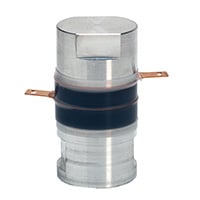NBL Series, Ultrasonic Receivers, Transmitters
Results:
6
Manufacturer
Series
Frequency
Type
Operating Temperature
Beam Angle
Voltage - Rated
Results remaining:6
Applied Filters:
NBL
About Ultrasonic Receivers, Transmitters
Ultrasonic Receivers and Transmitters are specialized devices that are capable of detecting and transmitting high frequency sound waves. These devices play a critical role in various industrial applications such as distance measurement, object detection, and liquid level sensing.
One of the key characteristics of Ultrasonic Receivers and Transmitters is their frequency range, which varies depending on the specific application they are intended for. The typical operating frequency range of these devices includes 50Hz, 10kHz to 65kHz, 20kHz, 25kHz, 28kHz, 38kHz to 42kHz, 40kHz, 42kHz, 49.5kHz, 58kHz, 60kHz, 300kHz, 1MHz, 2.45mHz, and 168MHz.
Another important characteristic of these devices is their rated voltage, which determines the amount of power required to operate them effectively. The beam angle of Ultrasonic Receivers and Transmitters is also critical, as it dictates the coverage area of the device.
Ultrasonic Receivers and Transmitters are typically made from high-quality materials that are durable and can withstand harsh environmental conditions. They are commonly used in various industrial settings such as manufacturing, automotive, aerospace, and robotics.
In summary, Ultrasonic Receivers and Transmitters are specialized devices that detect and transmit high frequency sound waves. They are characterized by their frequency range, rated voltage, and beam angle. These devices play a crucial role in various industrial applications, providing reliable and accurate distance measurement, object detection, and liquid level sensing capabilities.





